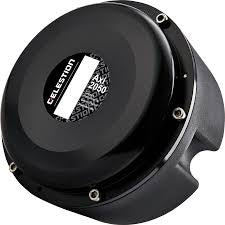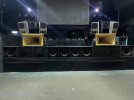Something is not right about Joseph's comments. The Axi's IMD is better, through out, according to his own measurements! yet he made no negative comments about the RCF, actually saying that
"The RCF ND850 2.0 exceeds my target for sound quality by a wide margin. Subjectively the driver sounds excellent."
vs
"The Axi2050 does not achieve my target for audiophile sound quality, at least not for the high frequencies."
His Burst Decay of the 2 drivers are not comparable as it seems the RCF was gated and the Axi is not.
The Axi has better IMD measurements and The Cumulative Spectral Decay is comparable in HF as well, much better controlled moving towards the horns Cutoff (reflective of the impedance charts)....As well the Axi2050 has a much Smoother response above 10khz....
The disconnect leads me to discredit his comments. As well, the FR is not very nice for the Axi on his horn. Yet the Axi on my horn as smooth as the RCF on his horn.
As well, He left out the 105db IMD measurements for the RCF so I cannot judge the Axi in comparison to a driver that he found to be "excellent"....It sorta reminds me how manufacturers conveniently leave out measurements....Given that the Axi has lower IMD than the Driver he preferred, at levels he did show, if I was a betting man, I'd say IMD performance is still better with the Axi at 105db compared to the RCF.... So "Excellent driver" vs his comments that at 105db the Axi only has acceptable distortion below 1khz would be conflicting, thus taking away credibility, so best to leave that RCF 105dfb measurement out lol.
I think something is right and somehow the horn + Axi is a no go. Could it have to do with Throat issues? I as well have not noted any significant change due to levels, and unlike some, I experiment above "safe" levels for short periods of time.
Regarding the low crossover. I can only speak for myself, as it seems that I am sensitive to the vertical axis of speakers. Having all the vocals on one Axis is definitely desirable. Distortion definitely comes into play when choosing a XO point but the very large horn (36" wide 20" height) I have allows me to stay within Xmax even at 115db/1m down to my 200hz XO. My experience lives mainly in the 1m world so once again, that is my preference.
I still think things are at the top 10% of the performance regarding these drivers. And that one could be happy with many different drivers, meant to compete at the top.
It also should be noted that people should stop comparing drivers that haven't been SPL matched throughout the whole frequency range.... With todays software, that should be an easy target for most well performing drivers.





